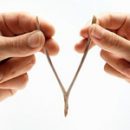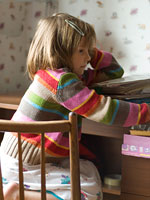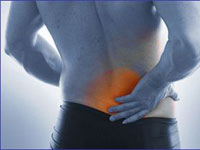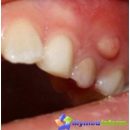Such verdict doctors is grieved for most parents: a beautiful child walk under threat. Oh, if it were only about a cosmetic problem... Unfortunately, the sealing of the foot of the foot is a serious and insidious pathology that can affect almost the entire musculoskeletal system. Than dangerous this disease? How to recognize it? And whether it is treated?
Content
What is flatfoot?
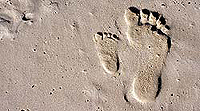 Unfortunately, flatfoot is one of the most common deviations from the norm in the development of the musculoskeletal system. Here are disappointing statistics: from 1.5 million children's population of the city of Moscow, it was revealed in 9 thousand guys. And about 2 thousand young patients complain about pain in the legs. First of all, let's figure out what they mean by this pathology?
Unfortunately, flatfoot is one of the most common deviations from the norm in the development of the musculoskeletal system. Here are disappointing statistics: from 1.5 million children's population of the city of Moscow, it was revealed in 9 thousand guys. And about 2 thousand young patients complain about pain in the legs. First of all, let's figure out what they mean by this pathology?
Flatfoot is the deformation of the foot at which it is reduced (flattening) of its arch. To better understand the nature of the disease, we will analyze some anatomical features of the foot. In the process of evolution, it acquired a form that allows you to evenly distribute body weight.
The bones of the foot are interconnected with strong interceptional ligaments (these are fibrous formations from the connective tissue, represented in the form of a beam connecting the bones) and form its arch, which provides depreciation of movements when walking and running. Convex vaults are oriented in longitudinal and transverse directions.
Therefore, the feet of an adult in the norm relies on three points - the heel hill, the head of the 1st tie bone and the 5th tall bone. Highlight two longitudinal and one transverse stop of the foot. Inner and outdoor arches form a longitudinal arch of the foot, and the front - transverse. Depending on their deformation, longitudinal and transverse flatfoot distinguish.
With longitudinal, the outer and inner arches of the foot are suggested, its length increases and almost the entire area of the sole contacts with the floor.
In the transverse one, the transverse arch, the front stage of the foot fan is diverged and relies on the heads of the five tie bones.
In all children under two years old, the longitudinal arch of the foot is flat. Such a state of experts consider physiological, because bone tissue in kids is soft, elastic. It contains few mineral substances that give the bones strength, and the muscular system is not developed enough. When children begin to get up on the legs (at 7-9 months) and walk on their own (at 10-12 months), the shock absorber feature takes on «Fat cushion», Which is located on the sole, under the skin.
In 2-3 years, the bones are gaining a sufficient amount of mineral substances, the articular surfaces acquire normal outlines, the ligaments become more durable, and the strength of the muscles allows us to be longer «on foot». The process of forming the bones of the foot continues to about 5-, 6 years of age. Only during this period you can talk about the presence or absence of flatfoot in the child.
If the diagnosis is confirmed
Most often in children there is a longitudinal flatfoot. It happens congenital and acquired. An innate form of disease is rare and is a consequence of intrauterine defects. Reveal it already in the hospital.
In most cases, one foot is amazed, but sometimes amazed both. This pathology is expressed in kids very noticeable: convex sole and «Released» outward foot. Treatment is carried out from the first days of the child's life: the deformation is gradually corrected by gypsum bandages. If it does not help, resort to surgical intervention.
As for acquired longitudinal flatfoot, it may be:
- Traumatic.
Occurs after fractures of the bones of the foot and ankle joint. Partial or complete damage to ligaments with similar injury, as well as a long-term stay of a child in a gypsum bandage contribute to the flattening of foot arches.
- Paralytic.
There occurs on the basis of violations of central or peripheral nervous systems (more often - the consequences of polio).
- Static.
This is the most common form of pathology. It occurs due to overloads with a significant increase in body weight, as a rule, in obesity, endocrine disorders.
- Rachitical.
It occurs in excessive elasticity of ligaments and weakening the muscles of the foot. The reason may be lack of vitamins and trace elements - with rickets or general exhaustion, as well as - with congenital pathology of the connective tissue.
So, the stop turned out to be deformed. What happens in the body? Bundles send «Signals» nervous system about disadvantaged in this «Plot». In response, muscles get «Note» Join B «Fight» with deforming forces - that is, strain as it should.
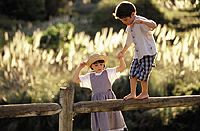 But for a long time to withstand such a load, they are not able, so they are quickly depleted, relax and stretched. And the deforming force continues to act now on the bundle. Soon and there is a stretching (especially if there is congenital pathology of the connective tissue), since without muscle support, they cannot work for a long time. Now all load falls on the bone. When they do not stand, the deformation of compression begins.
But for a long time to withstand such a load, they are not able, so they are quickly depleted, relax and stretched. And the deforming force continues to act now on the bundle. Soon and there is a stretching (especially if there is congenital pathology of the connective tissue), since without muscle support, they cannot work for a long time. Now all load falls on the bone. When they do not stand, the deformation of compression begins.
By this time, the bundles are finally «dropped out» Cancellation, and deformation enters the final, irreversible phase. Gait loses plasticity, smoothness. Children often complain about fatigue when walking, pain in the field of ankle joints or legs, and often in the lower back.
Some cannot clearly determine exactly where they are discomfort or pain, so do not complain, but simply prefer calm, less mobile games. The deformation of the ankle joint appears (it is also called Valgus or X-shaped). If you have one or more such signs, you need a counseling of an orthopedic doctor.
Sometimes the deformation of the foot may exist for many years (right up to mature age) in no way showing itself. But sooner or later, the deterioration will occur because the compensatory capacity of the body is not limitless.
In a child of 3 years (but no earlier), it is possible to conduct initial diagnosis of pathology, using the most common method - a planography (footprint). It is easy to do at home. The floor is pure paper sheet, and the baby becomes both legs on it. It is better that the soles were wet, then their clear imprint will remain on paper.
Torso at the same time you need to keep straight legs together. The outline of the stop in this position will be burned with a pencil. Then perpendicular to the contour lines are carried out straight, crossing the entire narrow part of the foot. The easiest degree of deformation is the first. Well, the most severe and serious - the third.
X-ray shot for children is not done at this age. First, the bones of the foot should not be completely «Rawred», Counting fabric on an x-ray is not visible and evaluating the true height of the longitudinal arch is difficult. And secondly, this method of diagnostic for the child is harmful enough, therefore it is performed only with serious testimony and more often after 9 years.
Only to eliminate severe pain is allowed to use painkillers.
Treatment of flatopy
Unfortunately, it is not necessary to count on a complete disposal of flatfoot, especially with far pathology. But it is necessary to be treated carefully, regularly and conscientiously. The earlier the signs of the disease are identified, the less the deformation of the foot, the more favorable conditions for stopping the progression of flatfoot and its correction.
At the initial stage of pain in the legs can be eliminated within 1-2 months by means of warm daily foot baths with sea salt, manual medical massage and gymnastics. As for the bath - the requirements for them are simple: water temperature + 40-50 "C, the duration of the procedure is 15-20 minutes, and the proportions of their components are indicated on the packaging and are different depending on the concentration of dry matter.
 Self-massage will be very useful - good, there are many devices for him (special mats, rollers, balls). Exercises with them are performed arbitrarily (walk along the massage rug, roll the massage roller and T.D.). As a result, blood circulation is improved, the muscle tone is normalized.
Self-massage will be very useful - good, there are many devices for him (special mats, rollers, balls). Exercises with them are performed arbitrarily (walk along the massage rug, roll the massage roller and T.D.). As a result, blood circulation is improved, the muscle tone is normalized.
Gymnastics is better to spend in the morning when the muscles are not tired yet. The technique and the pace of exercises is better to show the baby on its own example. The room should not be stuffy, or with drafts, and the child should be engaged in comfortable clothes that does not constrain his movements.
Therapeutic massage must be carried out by a graduate specialist - instructor on therapeutic physical education and massage.
Physiotherapy (paraffinosocherite applications, electrophoresis, and others often used in the treatment of flatfoot.) that improves metabolic processes and blood circulation in tissues and indirectly strengthens the stops of stop. Massage and physiotherapy are prescribed by courses, usually 10-15 procedures. It is advisable to spend 2-3 courses per year.
A special role in the treatment and prevention of progression of flat-refrigeration is allocated to orthopedic insams, which are prescribed at the first degree of pathology. They help unload painful sections of the foot and adjust the identified deformations with initial signs of flatfoot. The height of the layout of the arches of the foot in the insoles depends on the degree of compaction. Invest them is needed in the street and home shoes to ease the life of the crumb when it happens as long as possible on my feet.
As the child grows, the shape and dimensions of the shell inserts must be changed. And here you can not do without repeated consultations from an orthopedic doctor. Purchase insoles are best in prosthetic and orthopedic enterprises, orthopedic centers or order individually.
Only in this case, such products are guaranteed to meet the necessary standards. And still: do not use orthopedic insams «just in case». If you wear them constantly without objective need, the arches of the foot will become relaxed, and flatfoot can develop even healthy from an orthopedic point of view of the child.
If the kid is the third degree of longitudinal flatfoot, especially in combination with the Valgus deformation of the ankle joint, the insoles do not limit. He will have to «flaunt» In orthopedic shoes - shoes with lacing and rigid internal side support for foot.
Complications of flatfoot
What are the complications of flatfoot? Unfortunately, a variety of. First of all, it is a glove of the transverse stop of the foot with the sublink of the 1st finger out in adolescence. If the stop is in the wrong position for a long time, and especially if the valgus deformation of the ankle joint occurs, this may lead to strain in the footsteads of the foot and even to the change in the ratios of the joint surfaces of the knee and hip joints.
This is accompanied by pain in the legs, especially in the evening hours, and the reduction of depreciation functions leads to the spine pain. In the future, this can lead to scoliosis, that is, the arcuate deformation of the spine to the right or left, or to its curvature with the formation of convexity of the Zada - Kyphoz.

